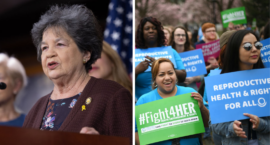
Profiles in Courage is a Ms. series honoring the extraordinary women and men who have transformed American institutions through principled public service. At a time when trust in government is fragile, these stories offer a powerful reminder of what ethical leadership looks like.
On Jan. 6, 2021, a mob unleashed chaos and destruction, attacking officers with metal pipes, chemical irritants and other makeshift weapons. Their goal was clear: force their way inside, inflict damage and disrupt the certification of the 2020 presidential election.
More than 50 United States Capitol Police and Metropolitan Police Department officers were injured, with several hospitalized due to the severity of their wounds. In the face of extreme violence and insurmountable odds, their heroic actions prevented an even greater catastrophe.











